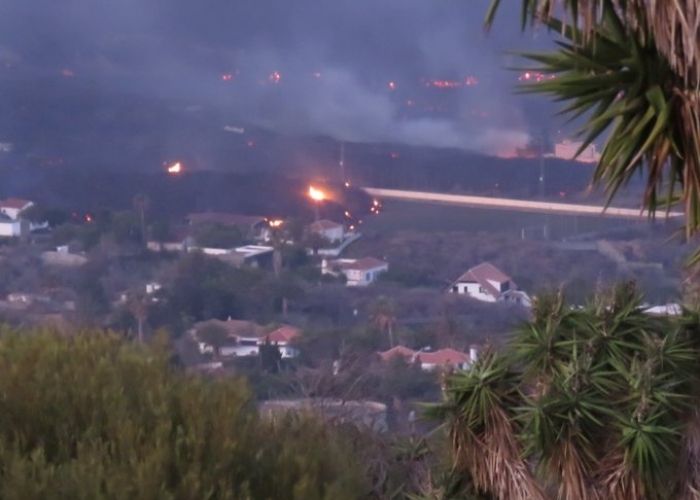SANTA CRUZ DE LA PALMA – Early today (Thursday), La Palma experienced the largest earthquake recorded since the volcanic eruption on the island. The quake had a magnitude of 4.5 on the Richter Scale with the epicentre in Villa de Mazo at a depth of 37 kilometres.
The latest record was set on Wednesday by a new earthquake measuring 4.4 on the Richter scale. However, in the early hours of this morning, seismicity intensified once again on the island around the magma-spewing volcano. Furthermore, 56 earthquakes occurred between 12.00 am and 7.15 am. Eight of them with magnitudes greater than 3 and two greater than 4; an earthquake of 4.1 was recorded in Mazo at a depth of 37 kilometres. The fifty earthquakes are located between Fuencaliente and Mazo at depths ranging from 4 k to 37 kilometres.
680 hectares affected and more than 1,500 buildings destroyed
According to the latest update from Copernicus, the European Union’s observation program, the lava flowing from the volcano has so far affected 680.4 hectares and engulfed 1,548 buildings.
Now, on its 26th day, of eruption, the number of hectares affected has increased by 24.4 compared to the previous 24 hours. In the same time span, 90 additional buildings were destroyed.
The lava now flows down in three streams at a speed of about 50 metres per hour. One of the three streams threatened the La Laguna neighbourhood and led to the evacuation of more than 700 people. In addition, PEVOLCA ordered the evacuation of another neighbourhood in the municipality of Los Llanos de Aridane on Wednesday evening. This was due to the advance of the last lava flow generated by the eruption.
On Wednesday, Pedro Sánchez visited La Palma for the fourth time since the start of the volcanic eruption. He asked the population for patience as scientists warn that the end of the eruption is not foreseeable.
Indications for end of eruption
Director of the National Geographic Institute, Carmen López, advised what indicators would point to the end of the eruption. López talked of three signs of exhaustion. Firstly, “the volcanic quake should subside, but it’s still very intense right now.” Secondly, the seismicity being felt, which is associated with the realignment of the deepest part of the volcano, must “decrease in frequency and magnitude.” Furthermore, “the amount of gases emitted into the atmosphere, sulphur dioxide, is still very high.” The expert indicated that “when these parameters decrease, we may have indications that the end of the eruption is closer.”


